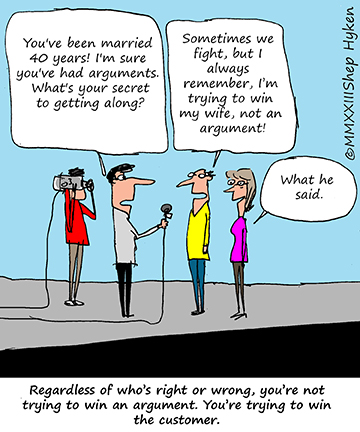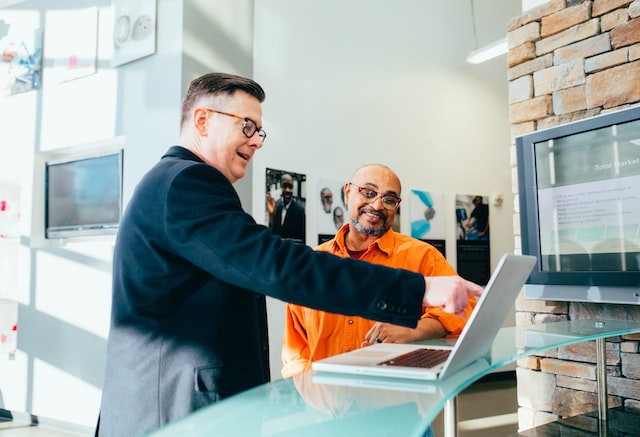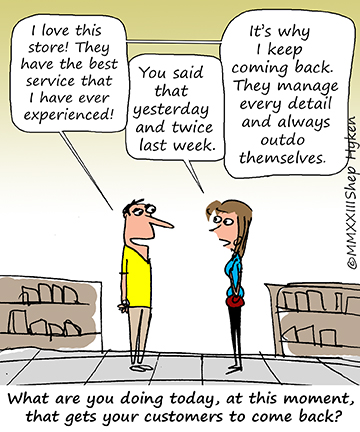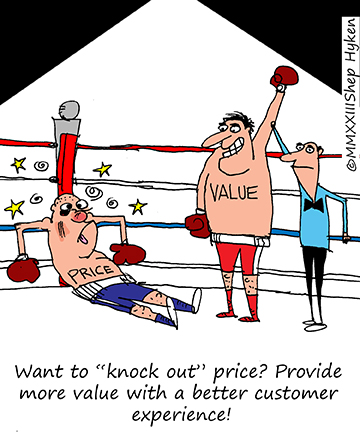
GUEST POST from Shep Hyken
Last week, I introduced you to The Customer Hierarchy of Needs based on Maslow’s Hierarchy of Needs. This week, we focus on our employees. Before you can have a strong customer experience, you must have a good employee experience. So, here are the five levels of the pyramid that make up The Employee Hierarchy of Needs:
-
- The Paycheck: At the base of the pyramid is an employee’s primary need: money. Money is generally the reason people go to work. Without money, employees can’t pay their rent or mortgage, put food on the dinner table, send their kids to college, and more. And often, money is just part of the compensation. Other benefits include insurance, retirement contributions, and other less tangible, yet still important, reasons related to the paycheck.
- Alignment with Beliefs and Vision (The Culture): While money may be a basic need, the culture of the organization must meet the employee’s needs and what they value. This motivates them to come to work and helps keep them employed with you. Employees want to feel excited about going to work.
- Uniqueness: This is often an overlooked opportunity. One way to get more engagement and productivity out of employees is to recognize and appreciate their individuality and make it part of their jobs. For example, an employee may speak a foreign language. If one of your customers speaks the same language, doesn’t it make sense to let that employee talk to the customer? Whatever skill or talent the employee has, find a way to incorporate it into their job, even if just for a small percentage of the time.
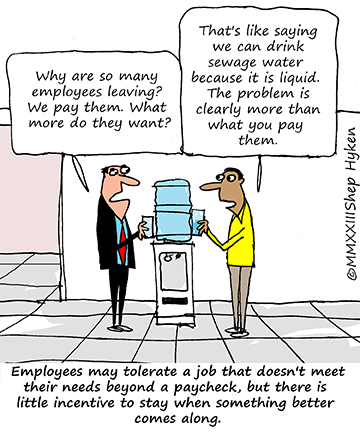
- Growth Opportunities: Most employees want to advance their careers. They want to know there will be opportunities to grow, learn, and feel better about themselves. Early in the interview process, there should be discussions about opportunities to grow.
- Fulfillment: At the tip of the pyramid model is fulfillment. When employees are fulfilled, it usually means they love their job, who they work with, and even their boss. This corresponds to Emotional Connection on the Customer Hierarchy of Needs. Other words to describe fulfillment include satisfaction, happiness, and completeness – all emotions that potentially drive employee loyalty.
Nobody wants to work in a place that doesn’t emotionally fulfill them. Employees may tolerate a work environment that doesn’t meet their needs beyond a paycheck, but there is little incentive to stay when something better comes along. If you want to create a powerful and positive customer experience, work on the employee experience. Remember, what’s happening inside the organization with employees is felt on the outside by the customer.
Image Credits: Wikimedia Commons
![]() Sign up here to join 17,000+ leaders getting Human-Centered Change & Innovation Weekly delivered to their inbox every week.
Sign up here to join 17,000+ leaders getting Human-Centered Change & Innovation Weekly delivered to their inbox every week.



